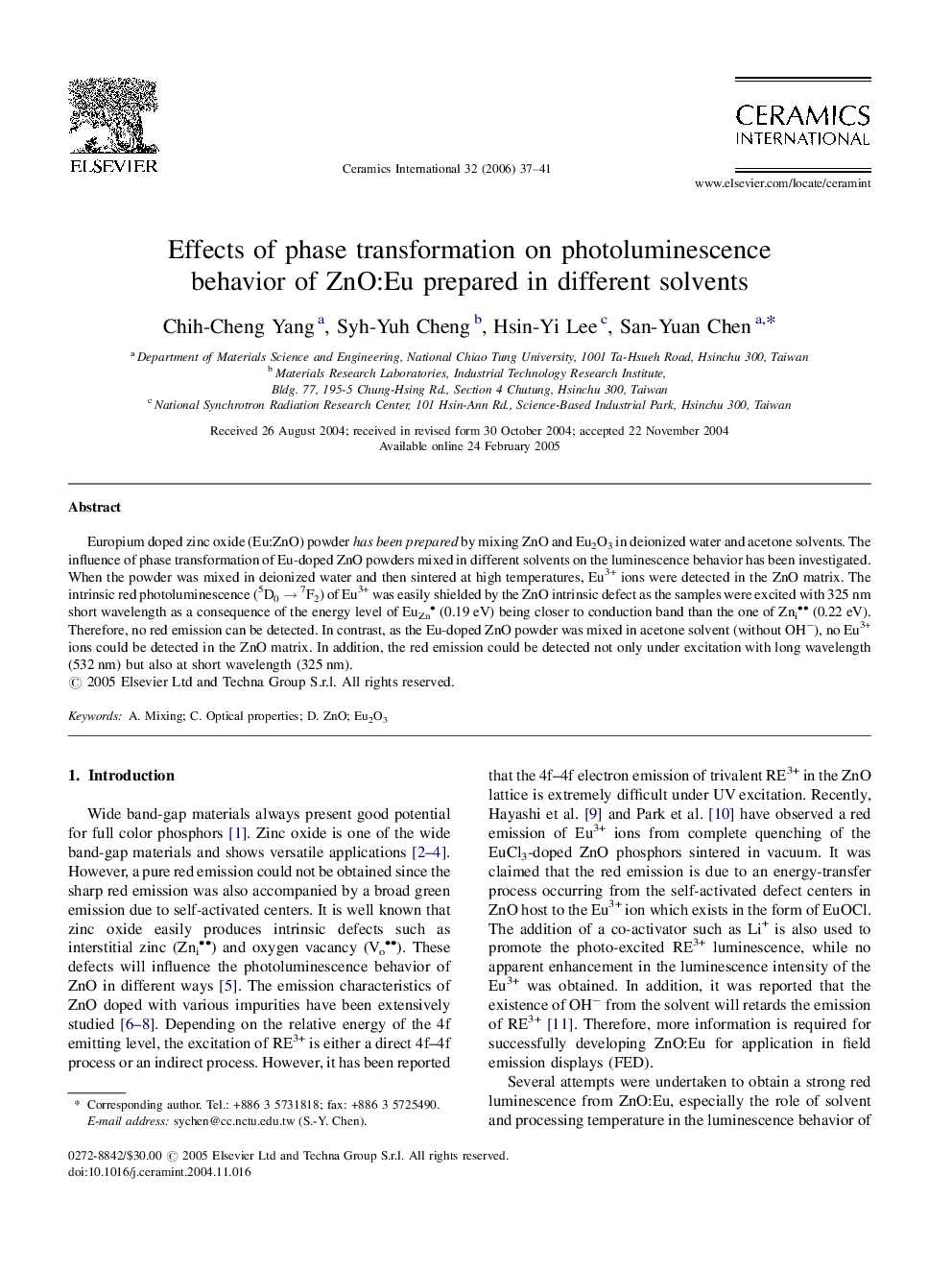| Article ID | Journal | Published Year | Pages | File Type |
|---|---|---|---|---|
| 1465360 | Ceramics International | 2006 | 5 Pages |
Europium doped zinc oxide (Eu:ZnO) powder has been prepared by mixing ZnO and Eu2O3 in deionized water and acetone solvents. The influence of phase transformation of Eu-doped ZnO powders mixed in different solvents on the luminescence behavior has been investigated. When the powder was mixed in deionized water and then sintered at high temperatures, Eu3+ ions were detected in the ZnO matrix. The intrinsic red photoluminescence (5D0 → 7F2) of Eu3+ was easily shielded by the ZnO intrinsic defect as the samples were excited with 325 nm short wavelength as a consequence of the energy level of EuZn (0.19 eV) being closer to conduction band than the one of Zni (0.22 eV). Therefore, no red emission can be detected. In contrast, as the Eu-doped ZnO powder was mixed in acetone solvent (without OH−), no Eu3+ ions could be detected in the ZnO matrix. In addition, the red emission could be detected not only under excitation with long wavelength (532 nm) but also at short wavelength (325 nm).
